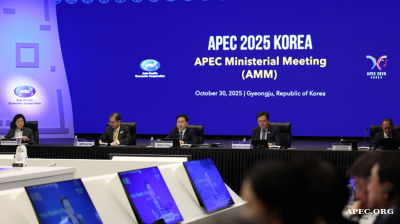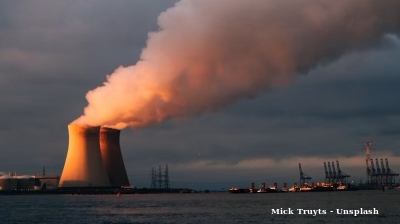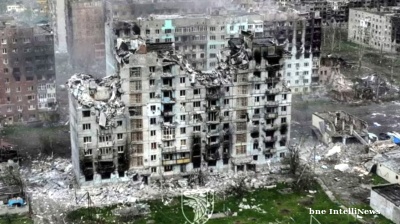Russian stocks are a buy again, after the market gained more than 50% in 2016 and is forecast to return some 15%-20% this year.
No-one is expecting a repeat of the broad-based rally that made everyone rich in the mid-noughties, but for the well-informed investor there are some gems on offer as the economy starts to recover and Russia’s biggest companies use the crisis to increase their market shares. Economic growth may be lackadaisical, but analysts are highlighting the earnings at some of Russia’s corporate heavyweights, which have been soaring.
Russia’s market re-rated last year as it became increasingly clear that the nine-year long gloom since the global financial crisis was slowly lifting, and political tensions were also being dialled down. The dollar-denominated Russia Trading System (RTS) returned more than 50% in 2016 and the ruble-denominated Moscow Interbank Currency Exchange (MICEX) put in a 24% gain to reach new all-time highs.
There was a “Trump-bump” in the last months of the year as speculators bet on rumours that the new US president might repeal sanctions quickly. As those hopes faded both indices fell by about 10% as of the end of March in the year to date, but the increasingly bullish analysts say all that means is there is buying opportunity now for those that missed out on last year’s rally.

The Aton brokerage believes there is between 15%-20% upside still left in Russian stocks over this year, depending on how the Trump-Putin relationship develops. The two men will meet in person for the first time only at the G20 summit in July.
Last year’s rally was driven by a reassessment of Russia’s political risk, but this year stock prices will be driven by more traditional drivers such as dividend payments and earnings reports. Outsized earnings gains amongst the market leaders is one of the few themes that has emerged in the last year.
“Nothing really stands out,” says Mattias Westman the founder of Prosperity Capital Management, one of the leading special investors into Russia. “What you have to do is stock pick amongst the sectors as each one has some stand-out stories.”

Detsky Mir: investors’ joy
International investors refocused their attention on Russian stocks after the IPO of Detsky Mir (Children’s World) in February, which raised €333mn for its owner, the Russian industrial conglomerate AFK Sistema.
It was the first big Russian IPO for almost three years and augurs a wave of IPOs that could hit the market in the coming years. Since the start of 2010, a total of 267 companies announced IPO plans, according to PBN Hill + Knowlton, of which 45 have actually happened, 12 were cancelled and another 210 are still pending.
If the IPO trend takes off then it will be an increasingly Russian business. While Sistema is listed on the London Stock Exchange (LSE), Detsky Mir chose to list on the Moscow Stock Exchange (MOEX). Since Moscow’s trading was hooked up to the international clearing and settlement systems of Clearstream and Euroclear, traders can buy and sell its shares as easily from London as anywhere else.
London, the traditional Mecca for Russian equity capital raising, is being frozen out and Russian companies are actively delisting from London, disappointed by the low trading volumes in their stocks. Russian gold producer Nordgold, controlled by tycoon Alexei Mordashov, is the latest to head for the door, but it intends to remain listed in Moscow. All in all the number of Russian companies with a secondary listing in London has fallen by a third since 2011 and more are expected to go.
Stocks that earn their money from consumers and so tap into the emerging middle class story have traditionally been the favourite amongst Russia-dedicated funds and they returned handsomely in the boom years. But with real disposable incomes still contracting, this asset class has not really taken off as a theme yet.
“The consumer-orientated stocks are the ones that give you the exposure to the transformation that Russia has been going through. That is still true today, but there are other opportunities available as well,” Jacob Grapengiesser, partner at East Capital, told bne IntelliNews in a recent interview.
A month after its flotation, Detsky Mir reported 2016 IFRS profits that had quadrupled to RUB3.82bn ($66mn), on revenues of RUB79.55bn ($1.4bn). Russia briefly became the largest market in Europe for children's toys in 2008 and is on its way back to the number one slot.

Magnit: the super supermarket
The poster boy of retail stocks has long been regional supermarket chain Magnit, which put in blistering rates of growth in the last decade by ignoring Moscow and expanding its chain in small towns and cities, where the majority of the population live. It is now one of the largest supermarket companies in Europe with an annual turnover of the order of $10bn a year.
Magnit became the “tourist” stock of Russian equity for investors looking for some Russian exposure to super-charge their funds’ returns, but without a specific mandate to invest in Russia. In the past the Yukos oil company, state-owned energy giant Gazprom and state-owned retail behemoth Sberbank have also played this role.

X5 Retail Group: the new champ
However, Magnit’s long rally seems to be over after shares were flat over the whole of 2016. Rival X5 Retail Group has taken over the mantle of top supermarket stock after its stock price almost doubled in 2016. In the last quarter of 2016 it even outsold Magnit, whose sales have been hurt by contracting real incomes in the regions.
“Overall 2016 revenue of X5, which runs the Pyaterochka, Perekrestok and Karusel retail food chains, was RUB1.026 trillion ($17.2bn), 27.5% up year-on-year and the highest increase since 2011. A dramatic rise in retail space drove the growth as the company added roughly 1mn sq metres last year, an increase of 29.1% y/y,” VTB Capital said in a note.
X5 is likely to become the biggest supermarket in Russia in 2017 but it makes a 7% profit margin on each sale against Magnit’s 10% margin. Magnit’s founder Sergey Galitsky doesn't seem to care about being number one; he says he is more interested in building a sustainable business than superlatives. “The top spot is not for us,” Galitsky told analysts. “We are for a profitable business.”

Aeroflot: dinosaur no more
There is a rule of thumb for investing in emerging markets: avoid the state-owned companies and overweight the best private companies. That rule doesn't work in Russia. Two of the best stocks on the market are both owned by the state: Aeroflot and Sberbank. Both companies have transformed themselves from Soviet-era dinosaurs (in the 1990s Aeroflot’s mascot was a flying elephant) into the best companies in their respective classes.
Aeroflot has been a market darling for several years. Business was hurt by tourism bans on Egypt and Turkey, both due to political rows, but its business was bolstered by the collapse of its nearest rival Transaero.
Like many of the hot stock picks for this year the company reported its best ever results in 2016 with net IFRS profit of RUB38.83bn (€628mn) versus net loss of RUB6.5bn in 2015, the company said on March 2. Its share price will be helped even more by the proposal floated in March to share this extra money with investors by increasing dividends to 50% of income for the first time.
Last year, Aeroflot, which unites the flagship company Aeroflot, and low-cost operators Pobeda, Rossiya, and the Far-Eastern Avrora airline, enjoyed a 14.8% year-on-year bump in passenger turnover to 112bn pkm, and passenger traffic added 10.3% to 43.4mn.
"The rapid growth in traffic volumes is positive for Aeroflot's share price performance and supports our [positive] view on the company," Gazprombank said in a research note after the results were released. And this year the company intends to keep up the pace, guiding for passenger traffic to grow by another 12-14%.

Sberbank: the gorilla in the sector
Sberbank has been transformed from a Soviet-era gorilla with famously surly service into one of the most modern banking institutions in Russia and a new player in Central Europe.
The change is thanks to the stewardship of CEO German Gref, who began life as an academic before being appointed by Putin at the start of his reign to oversee a liberal reform plan, dubbed the Gref plan.
Gref brought the same no-nonsense liberal thinking to running Russia’s biggest retail bank. In 2015 Sberbank’s profits equalled the whole sector’s earnings and in 2016 it still accounted for just under three-quarters of all banking profits.
To give a little taste of Gref’s management style he recently turned up at one of the branches wearing a special suit that mimics multiple disabilities including the inability to walk properly, deafness and blindness and tried to open an account to see how well the bank’s services could cope.
The bank leads in terms of deposits and loans and it doubled profit in 2016, making RUB141.8bn in the fourth quarter alone. Bank analysts covering the sector typically issue two analyses: one covering Russia’s banking sector, and one covering Sberbank, as the stories are so different. The bank’s strong performance is represented by its share price, which almost doubled from $5.38 on December 30, 2015 to $11 on December 30, 2016.
Of course both Aeroflot and Sberbank enjoy competitive advantages thanks to their state-owned status, but both benefit from strong management teams, which is still a rarity in Russia, and clear strategies that have made them innovators in their sectors.

Tinkoff Credit Systems: savers’ savings
The rest of the banking sector has had a terrible time in the last few years, barely breaking even on aggregate. However, Tinkoff Credit Systems (TCS), set up by serial entrepreneur Oleg Tinkov, is an exception. Russia’s first purely online bank, it has been flourishing thanks to its low-cost base, which allows it to offer attractive deposit rates – something the inflation-sensitive Russian consumer pays close attention to.
However, TCS’ share price also highlights another rule of thumb for investing into Russian stocks: don't buy the IPO. TCS listed in London with much fanfare on October 22, 2013, priced at $17.50, the top of the offer range, to raise $1bn on a valuation of $3.2bn. But the share price immediately crashed as the 2015 silent crisis got underway, falling to a nadir of $1.60 in September 2015. Since then the shares have recovered strongly and were trading at $10.75 at the end of March, but they remain underwater compared to the IPO. It's a typical story as most Russian stocks are overpriced at the time of their listing and several, like the “people’s IPO” of state-owned VTB Group, never regain their offer price.
Still, if the investor gets the timing right then these IPO disappointments can turn into stellar investments. TCS has turned into an excellent proxy for Russia’s banking sector. The bank earned RUB3.7bn ($65mn) in the fourth quarter of 2016, well above consensus (RUB2.7bn), four-times more than in the same period a year earlier, as well as more than a third (37%) more than the quarter before.
“Annualised return on equity was an outstanding 51.4% (20.5% for 3Q16). Net interest income increased 39% y/y and 8% q/q to RUB9.5bn, while net interest margin (NIM) improved to 26.5% (vs 25.9% for 3Q16),” Gazprombank gushed in a research note.
And like so many of Russia’s best stock picks, TCS is happy to share its growing profits with its shareholders: in March the bank introduced a new dividend policy with a payout ratio of 50% of the previous quarter's net income. The 2017 dividends should be a minimum of RUB7bn, which implies at least a 7% dividend yield, according to analysts.

Top PIK
Real estate is one of the few sectors that are a theme amongst analysts and investors, partly due to the steadily rising volumes of mortgages. However, the pundits agree that PIK Group is currently the hot stock in the sector, as well as being another name that recently left the LSE along with pharmaceutical firm Pharmstandard, Russian gold miner Polyus Gold, potash producer Uralkali and drilling giant Eurasia Drilling Company, which have all maintained their Moscow listing.
PIK is Russia’s biggest housebuilder and it had a great year in 2016. It emerged as the clear leader after reporting the strongest figures in the sector and after its acquisition of smaller rival Morton lifted the company clear of the competition. Pre-sales have doubled to 1.7mn-1.9mn sqm in 2017 from 950,000sqm in 2015 and the stock has been a top performer in 2016, rising from $2.9 at the start of 2016 to $4.72 at the end of the year, easily outperforming the index.
Real estate has piqued investors’ interest after the Moscow residential market grew by a fifth (21%) y/y in 2016, returning to the volumes last seen in 2013. In the first three months of this year the other big traded names in the sector, LSR and Etalon, made gains of 32% and 41% respectively, while the overall RTS and MICEX indices both are in the red YTD, down 5% and 10% respectively.

LUKoil: sexy oil stock
Raw material companies are usually included in a portfolio simply because the companies are so big and together make up about two thirds of the Russian market capitalisation. In the last year many of the big oil names have seen their stock rise as oil prices recovered following their crash in November 2014.
State-owned oil major Rosneft’s share price almost doubled from $3.47 on December 30, 2015 to end the year at $6.5 on December 28, 2016. And its sister Gazprom also saw its share rise from $3.69 to $5.05 over the same period. While Rosneft’s returns beat the index, Gazprom underperformed by a third, according to Bloomberg data.
However, the sexy oil stock at the moment is privately-owned Lukoil, which has seen its share price outperform both the index and its peers in the last year. The stock has risen from $32.2 in January 2016 to end the year at $56.4 as of the start of this year. As of the end of March the stock is up just under 50% y/y, about 20ppt ahead of the RTS index.
Russia’s second largest oil producer returned to profit in the fourth quarter after crude prices rallied, reporting net income of RUB46.6bn ($786mn), compared with a loss of RUB65bn a year earlier. That beat the RUB45bn average estimate of seven analysts surveyed by Bloomberg. Revenue held steady at RUB1.4 trillion ($24.6bn)
Free cash flow is increasing and Lukoil is upgrading, including a refinery-modernisation project that will be “mirrored in dividends increasing every year”, according to Alexander Kornilov, an oil and gas analyst at Aton. Kornilov has flagged Lukoil as its top pick in the Russian oil and gas sector, thanks to good management, improving profits and a promise of generous dividend payout this year.

Alrosa: the diamond in the tundra
Russia’s diamond monopolist Alrosa is the new kid on the block for equity investors. Another SOE company that defies the “government is bad at business” adage, equity investors started to pay closer attention to it after 11% of the company was successfully privatised in July last year.
Located in the frozen north, Alrosa is deep in the tundra on the site of a former Gulag camp that had huge Kimberlite pipes – the rock where you find diamonds. The company reported strong January rough diamond sales of $358mn, up 60% y/y, thanks to a quicker than expected recovery of Indian demand. And analysts expect this growth to continue as diamond dealers start to restock following a very bad 2015.
The company is part of the government’s privatisation drive and, while the government has delayed most of the privatisation on the docket, the track record of those SOEs that have been privatised has been excellent: the shares of Rosneft, Sberbank, the Moscow Exchange (MOEX), and Aeroflot have all had long runs of outperforming the market following the partial privatisation of their shares. The next interesting name that should come up in the first half of this year will be the partial privatisation of Sovkomflot, a state-owned global shipping powerhouse. And more Alrosa shares are also due to be sold this year.
Part of the growing appeal of SOE shares is a switch in mindset by the government on how to profit from these names. In the 1990s the Yeltsin government lived hand to mouth by levying special taxes on Gazprom whenever it ran out of money. Today the state has decided a better way to tap the billions these companies generate is to force them to pay dividends: current all SOEs are supposed to pay 25% of their profits out to shareholders – including the minorities – and the Ministry of Finance is trying to force them to pay 50%. Many of the SOEs are resisting this push, but not Alrosa, which is expected to pay 50% of net profit in dividends for 2016. If it does they would total RUB9 per share, yielding a whopping 10.4% dividend yield. "Following the recent sell-off, we consider Alrosa as one of the most oversold stocks in the Russian metals and mining sector and reiterate our ‘overweight’ recommendation," Gazprombank said in a note in March.
 MOEX: emerging player
MOEX: emerging player
Finally, the last stock to highlight is the Moscow Exchange itself. 2017 should be a good year for Russia’s leading exchange (there are about half a dozen smaller exchanges in the country) as Russian companies increasing come home in search of better liquidity. MOEX is transforming from a local exchange in an emerging market to a global player in its own right, even if the International Financial Centre programme launched several years ago is downplayed today.
The exchange was transformed following the merger of the RTS and MICEX in 2011 and hooked up to the global capital markets after it joined Clearstream and Euroclear. MOEX is unusual in that in addition to the fees it generates from the trade of stocks and bonds it also earns income from custody, settlement, derivatives and FX trading amongst other things. The exchange has pioneered good corporate governance by applying the best in practice standards to itself and has the same approach to its investor relations, treatment of minorities, and of course has the inevitable generous dividend policy: the pay out was recently increased to 55% of profits, giving a 7% dividend yield.
“The stock is valued at a 2017F price-to-earnings ratio (p/e) of 10.2x, or at a 54% discount to global emerging market peers,” VTB Capital said in a note that marked the name up to a ‘buy’ in March. “Headwinds remain, but the business is solid.”
Features

Global leaders gather in Gyeongju to shape APEC cooperation
Global leaders are arriving in Gyeongju, the cultural hub of North Gyeongsang Province, as South Korea hosts the Asia Pacific Economic Cooperation summit. Delegates from 21 member economies are expected to discuss trade, technology and security.

Project Matador marks new South Korea-US nuclear collaboration
Fermi America, a private energy developer in the United States, is moving ahead with what could become one of the most significant privately financed clean energy projects globally.

CEE needs a new growth model as FDI plunges
wiiw economist Richard Grieveson says the CEE region’s long-standing model of attracting FDI through low labour costs no longer works.
KSE: Ukraine is facing a $53bn budget shortfall, but economy is stable for now
Ukraine is in urgent need of additional financing from partners as the continuation of the war drives up defence spending and reconstruction needs, jeopardizes budget financing, weighs on the balance of payments, and slows economic growth.




